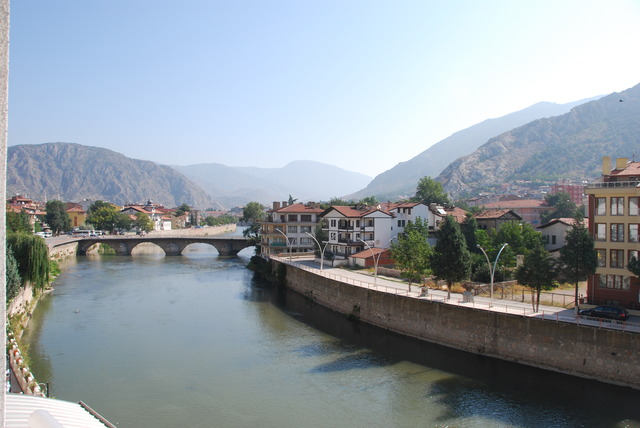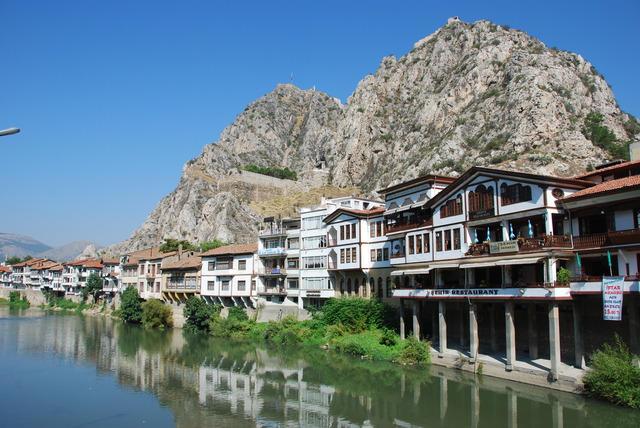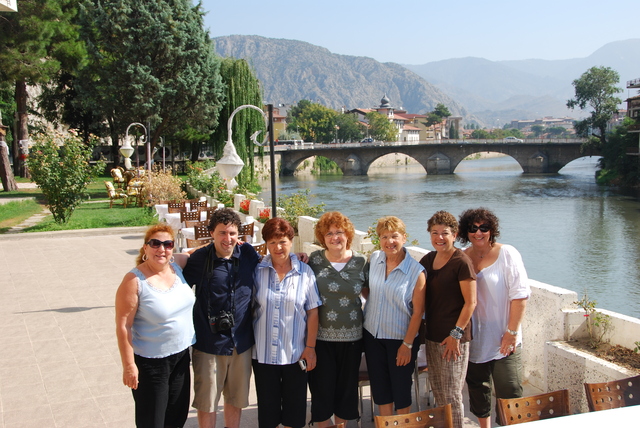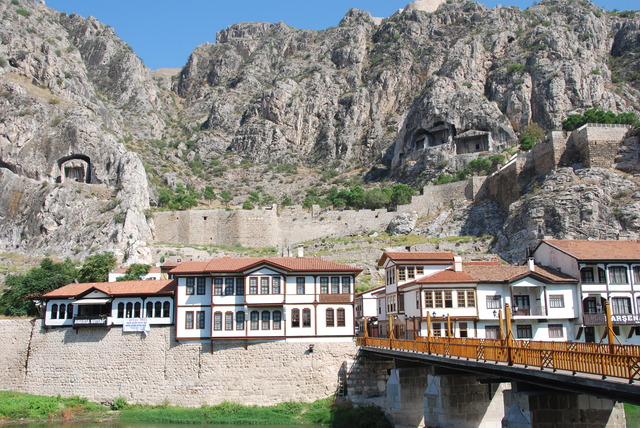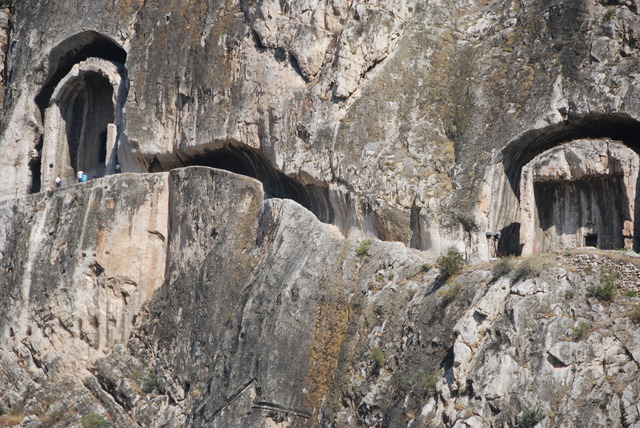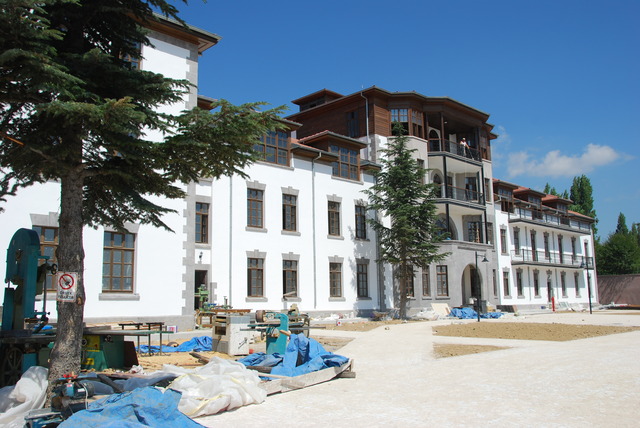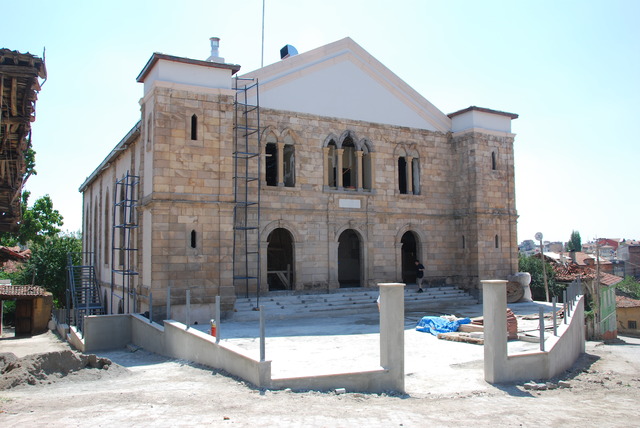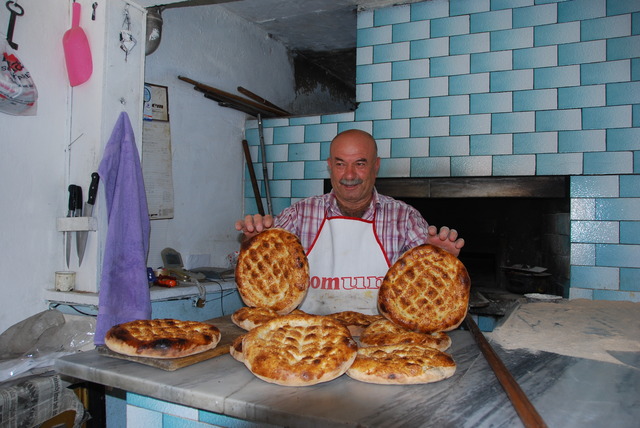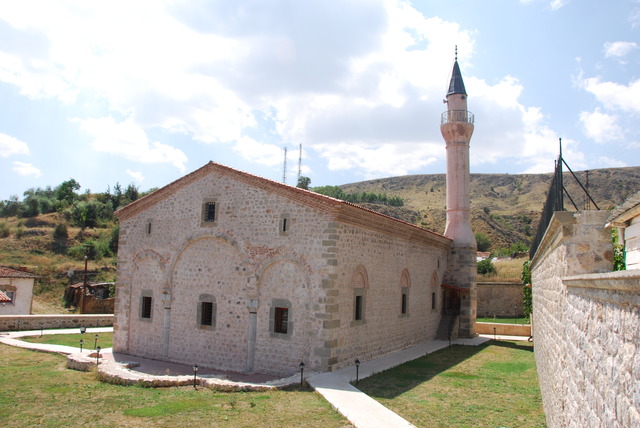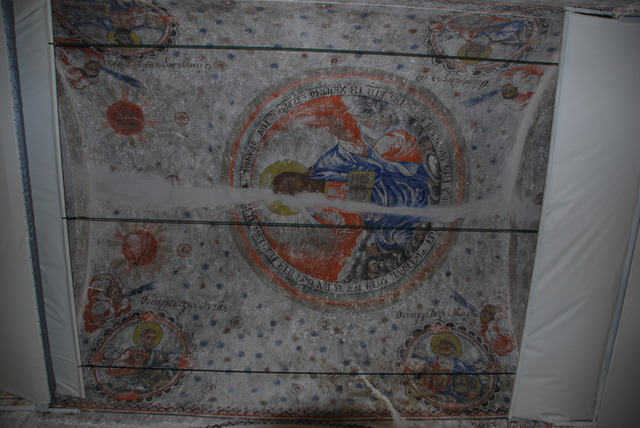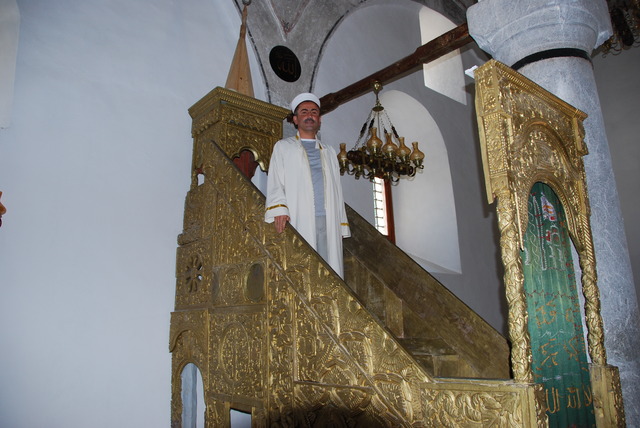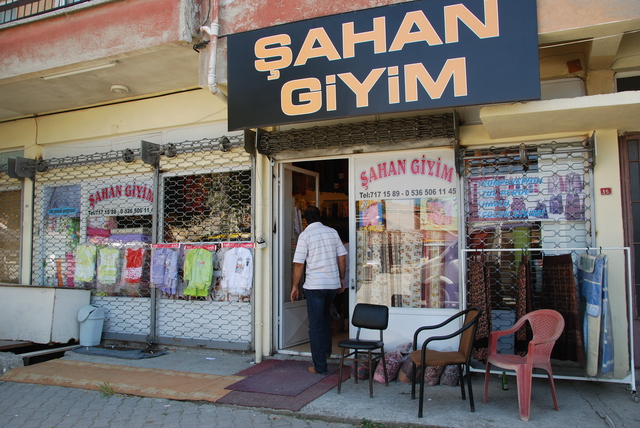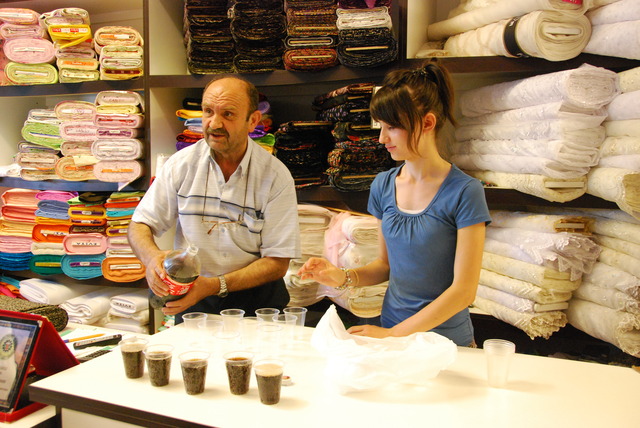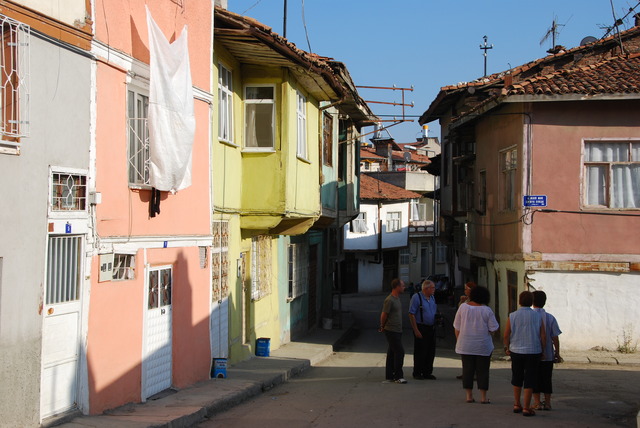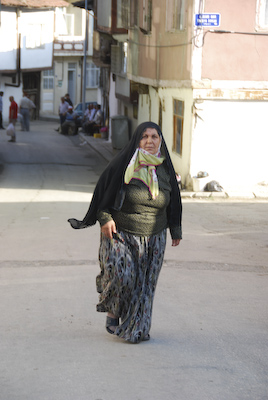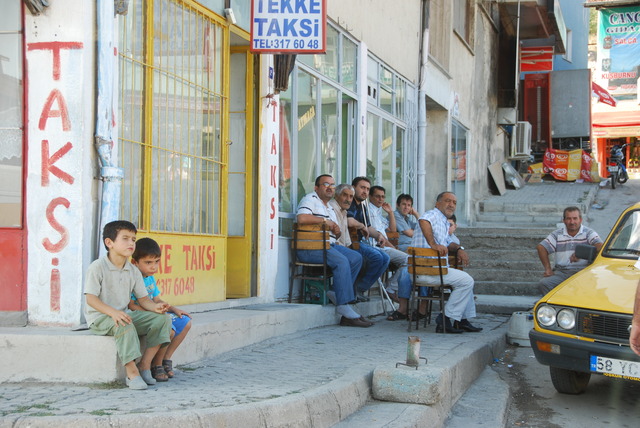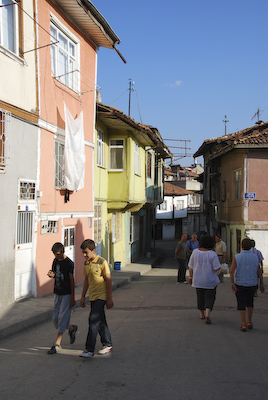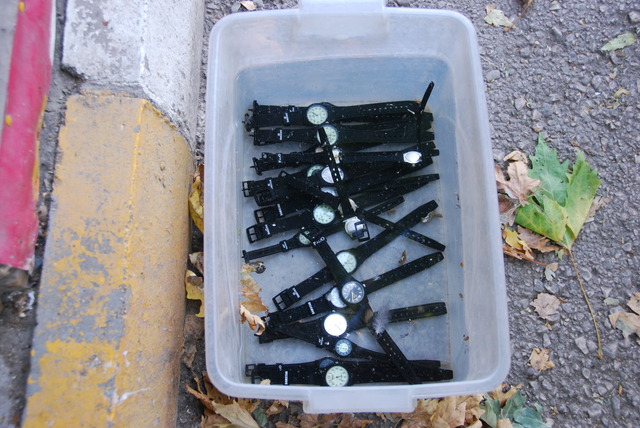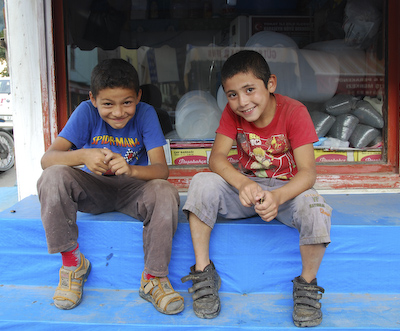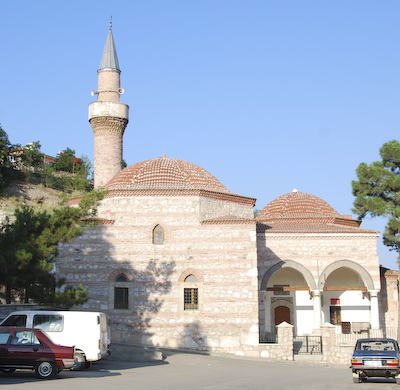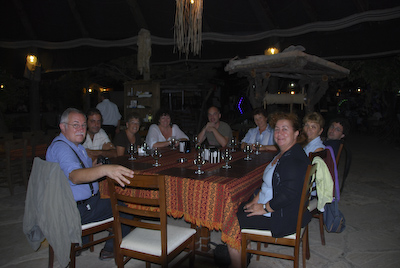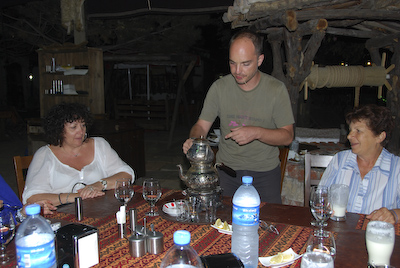Yesterday we drove through the hills of north central Turkey and stopped for the night in Amasya. I had read about the city before our journey and the information on the Internet said that it was a beautiful city which was built in a narrow gorge of the Yesilimak (green) River.
Armen, our guide called Amasya “the Saltzburg of Turkey” because the cliffs rise high above the city. Yes, it is beautiful with very interesting architecture in a gorgeous natural setting. Lovely white stucco houses with brown wood trim were built along the river. Armen said that the houses are examples of Armenian architecture.
Amasya has a colorful 3000 year old history and was mentioned in documents during the time of Alexander the Great. In the 3rd century BC, Amasya became the capital of the Pontic kingdom until they were defeated by Julius Caesar in 47 BC at the battle of Zela (now called Zile, more later). From 1240 through 1390 the region was under Mongol rule and after this time, the entire region was ruled by the Ottoman Empire.
We stayed at the Amasya Buyuk Otel with our rooms overlooking the river. The tall cliffs of the gorge towered above us. Pontic kings were buried high above in caves carved into the sides of the rocks. The tombs are open to tourists and the entrances are visible from the street along the river.
Amasya is a beautiful city but the hotel left much to be desired. It was located on the river front and had a wonderful view, but the air conditioning was marginal and the room was shabby. The entire hotel looks like it’s getting ready for renovation, or should be. When I stepped off the elevator on the 2nd floor, the first thing I saw were pictures on the floor, leaning against the wall instead of on the wall. The halls were dark and spooky. The breakfast was also disappointing.
Anyway, after breakfast we boarded the van and Selcuk (pronounced “Seljuk) drove us to Merzifon. A university had been built there by American missionaries in the 1930s for poor Armenians to be educated. Over the years, a number of prominent Armenians obtained their educations at that university. Recently, the university had been closed but is now under reconstruction and will be a school. Down the street from the university there are several homes in the Armenian architectural style.
After looking at the university, we went to an Armenian church in Merzifon which had been in disrepair. It is currently being renovated and is being transformed into a theater. I suppose it is good that it isn’t being torn down. There are very few Armenians left in Merzifon to support a church.
Then we drove to Gumushacikoy. Don’t ask me to pronounce it! We drove to a small bakery which was co-owned by an Armenian man. His partner is Turkish. We introduced ourselves to the man and Armen spoke to him about his life and his experiences. While they were chatting, the baker produced several loaves of round bread from the oven and showed them to us. “Ekmek” is the Turkish word for bread. He happily posed for photos. Then he wrapped three large loaves and gave them to us! We offered to pay him, but he refused our Turkish Lires.
The baker also mentioned another Armenian man who lived in Gumushacikoy. Someone ran up the hill to get the man and we watched the baker pull more loaves of bread from the huge oven. By the way, the bread was delicious!
Finally, Gabriel Balian appeared and Armen and Guillaume Perrier, the journalist from Le Monde, had a long chat with him. Gabriel said that there were only five Armenian families left in this town. He said it had been difficult living with the Turks but recently things have improved.
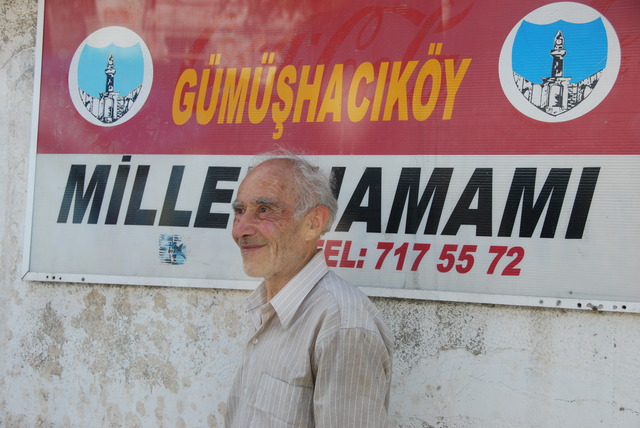 Gabriel in front of the hamam that his grandfather built
Gabriel in front of the hamam that his grandfather built
Gabriel wanted to show us a church which had been converted into a mosque, so we all boarded the van and drove out of town to a small hamlet named, Gumus (pronounced Gou-moosh). The streets were very narrow and the van had trouble navigating through them, but we finally arrived at the top of a hill. The church was typical Byzantine architecture, with a recent minaret.
We looked around and took photos. The Turks had not remove the paintings of Christ and four disciples from the ceiling. They had installed a horizontal shade which they pulled to cover the paintings during prayer times. It was uncovered now.
Armen, Gabriel, and Guillaume talked to the Imam. The Imam explained about the Muslim service to us and told us his role in the mosque, entirely in Turkish!
Afterwards, Gabriel led us to another Armenian man who owned a fabric shop in Gumushacikoy. We all entered the shop and and looked around while Armen and Guillaume spoke to Shahan, the owner of the shop, in Turkish.
The man offered us glasses of cold Coka Cola. Shahan also related his experiences as an Armenian living in Turkey.
Finally we drove to Zile. This the town where Nicole’s and Francoise’s father’s father was born. Zile is located in Tokat Province and there is evidence of human habitation in the Zile region since Neolithic times (9500 BC). Zile was known as Zila during Roman times. Along the road to Amasya, Julius Caesar won the Battle of Zela in 48 BC prompting him to say, “Veni, Vidi, Vinci” – “I came, I saw, I conquered”. This battle was against Pharnaces II who was the son of the great king Mithridates VI, rulers of the Pontic Empire.
Today Zile is a busy town with shops and outdoor venders selling dried fruits and chickpeas, and walnuts. Armen told us that there were no more Armenians living there any more. Selcuk parked the van off the main street and we walked down a street looking at houses which Armen said were in Armenian architecture.
Zile has a population of about 36,000 people, so it is a good sized city. As in every town and city in Turkey, men congregate everywhere, sitting together outside shops talking and watching the world go by. When they see us, they stop talking and watch everything we do.
One shop had a couple of bright yellow taxis parked out front and a group of men sat talking together on the side walk. Above them written in large letters on the wall was the name of the taxi company, “Tecca Taxi”. An appropriate name I thought. Then across the street we saw another taxi company, with similar yellow cars and a group of men and its name was “Calla Taxi”. Another good name for a taxi company!
Armen and Selcuk asked some local men about the houses and were given directions to a fortress. On the way, we stopped to look at the wares of a street vender. What attracted us was an assortment of wrist watches lying in a pan of water. This was supposed to demonstrate that they were waterproof. The man also sold prayer beads and large pocket knives.
Half of our group followed Armen and Francoise to the fortress, but four of us were left behind shopping for wristwatches and beads. After we made our purchases, we turned to look for the others, but they were gone. We walked in the direction that we thought they went. For a wild few minutes, we thought we were lost and abandoned in Zile.
Then we remembered that Selcuk had parked the van around the corner from the street vender. If one has to get lost in Turkey, it’s best to get lost with Selcuk the Turkish driver with a big white air conditioned Mercedes van!
We walked back to where he had originally parked but the van was not there. After a few seconds of panic, we looked around and two men, who were sitting on the steps across the street, called out in incomprehensible Turkish and pointed down the street toward the left. We looked and there was the van!
Of course, the villagers had been watching us and knew all our movements. No secrets in a Turkish town! We waved thank you to the men and hurried to the safety of the Mercedes van and Selcuk. Selcuk called Armen on his cell phone and we connected with the rest of the group, but it had been a scary few minutes!
It was a long three hour drive back to Sivas and we watched the sun set over the distant hills. Selcuk is Muslim so he does not eat or drink all day. After the sun set he reached for a bottle of water and Armen gave him a loaf of bread from the bakery this morning.
As we approached Sivas and it was 8:00 PM, Armen asked if we wanted to eat “before we got to Sivas or after we checked into the hotel.” Apparently, he knew of a restaurant on the outskirts of town that had good shish-k-bab. It was a huge fascinating place with outdoor seating.
We guessed it was part of a chain because it had the same name as the restaurant in which we had eaten in Sivas the night before last. The food was good and plentiful and made a good ending to a very long day.
After we left the restaurant and we arrived in downtown Sivas, we were surprised to find the streets full of people. It was about 11:00 PM and the entire city was out walking! There were family groups, children, young people & old people, many eating ice cream. It was very festive and noisy. The day’s fasting was finished and everyone was enjoying the cool evening air.
